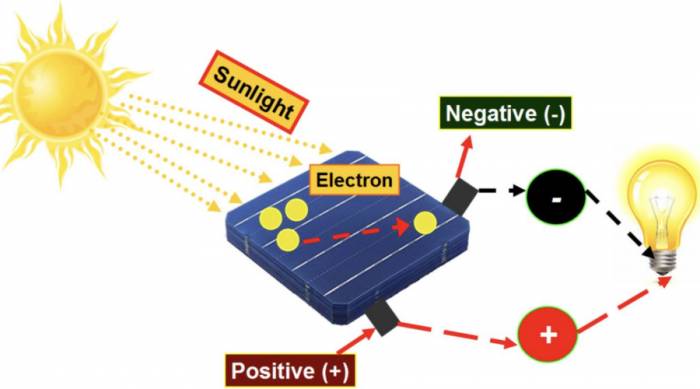Photovoltaic power generation, as a green and renewable source of energy, is being increasingly applied to our daily lives. Let's explore the principle of photovoltaic power generation and see how this amazing technology converts sunlight into electrical energy.
What is photovoltaic power generation?
Photovoltaic power generation is a process that uses solar cells to directly convert sunlight into electrical energy. This conversion process is both efficient and environmentally friendly, producing no harmful substances, which is beneficial to the sustainable development of the Earth.
Working principle of solar cells
The core component of photovoltaic power generation is the solar cell. A solar cell is a device made of a special semiconductor material, usually with silicon as the main raw material. The element silicon has unique physical properties, which can act as both a conductor and an insulator, making it very suitable for manufacturing solar cells.
The working principle of solar cells can be divided into the following steps:
Photon absorption: When sunlight shines on the surface of the solar cell, photons interact with electrons in the semiconductor, causing electrons to transition from the valence band to the conduction band, creating holes.
Electron-hole pair separation: Near the p-n junction (the boundary between positive and negative charge regions) of the semiconductor, electrons and holes are separated, forming an internal electric field.
Current formation: Driven by the internal electric field, electrons flow from the n-region to the p-region, and holes flow from the p-region to the n-region. This forms an electric current.Electrical Energy Output: By connecting the anode and cathode to an external circuit, electrons can flow from the anode to the cathode through the external circuit, providing electrical energy.
For ease of understanding, let's use an analogy:
Imagine a solar cell as a unique energy factory that converts sunlight into electrical energy that we can use. We can explain the working principle of a solar cell with the following analogy.
Photon Absorption: The solar cell factory has a special "window". When sunlight (photons) passes through this window, they excite the "workers" (electrons) in the factory from a resting state to an active state. This process is like being awakened by sunlight in the morning, waking up from sleep, and preparing to start a new day's work.
Electron-Hole Pair Separation: In this factory, the activated "workers" (electrons) and quiet "workers" (holes) are arranged in different areas. This is like in a factory, busy workers are arranged in the production workshop, while resting workers stay in the rest room to maintain efficient work.
Current Formation: Between the two areas of the factory, there is a "conveyor belt" (internal electric field) that can transfer the activated "workers" (electrons) from one area to another. This is like the conveyor belt in the factory transporting finished products from the production workshop to the warehouse for further processing or shipment.

Electrical Energy Output: Finally, the factory gathers the activated "workers" (electrons) to form a group of people who can be dispatched at any time, and then transports them to places that need energy to meet people's needs.
Through the above analogy, we can more intuitively understand how solar cells convert sunlight into electrical energy. It is this magical process that allows us to use solar energy to provide clean, green energy for our lives.
---
Components of a Photovoltaic Power Generation SystemPhotovoltaic power generation systems are mainly composed of the following parts:
Solar cell modules: Connect multiple solar cells together to form a module capable of outputting sufficient electrical energy.
Controller: Responsible for monitoring and adjusting the output current and voltage of the solar cell modules to prevent overcharging or over-discharging issues.
Inverter: Converts the direct current generated by the solar cell modules into alternating current for use in our daily life appliances.
Battery: Used to store the electrical energy generated by the photovoltaic power generation system, for use during the night or when sunlight is insufficient.
Advantages of photovoltaic power generation:
Photovoltaic power generation has many advantages, including:
Renewable: Solar energy is an inexhaustible source of energy that can provide us with a continuous supply of energy.
Environmental protection: The photovoltaic power generation process does not produce harmful substances and is pollution-free to the environment.
Energy saving: Utilizing photovoltaic power generation can reduce dependence on fossil fuels and lower energy consumption.Widely Applied: Photovoltaic power generation can be applied to various fields such as households, agriculture, and industry, providing convenience to our lives.
Through the above introduction, I believe everyone has a deeper understanding of the principles and advantages of photovoltaic power generation. With the development of technology, photovoltaic power generation technology will become more and more mature, bringing more clean and green energy to our lives. Let us pay attention to and support the development of photovoltaic power generation together, and make contributions to the sustainable development of the Earth.
Comment